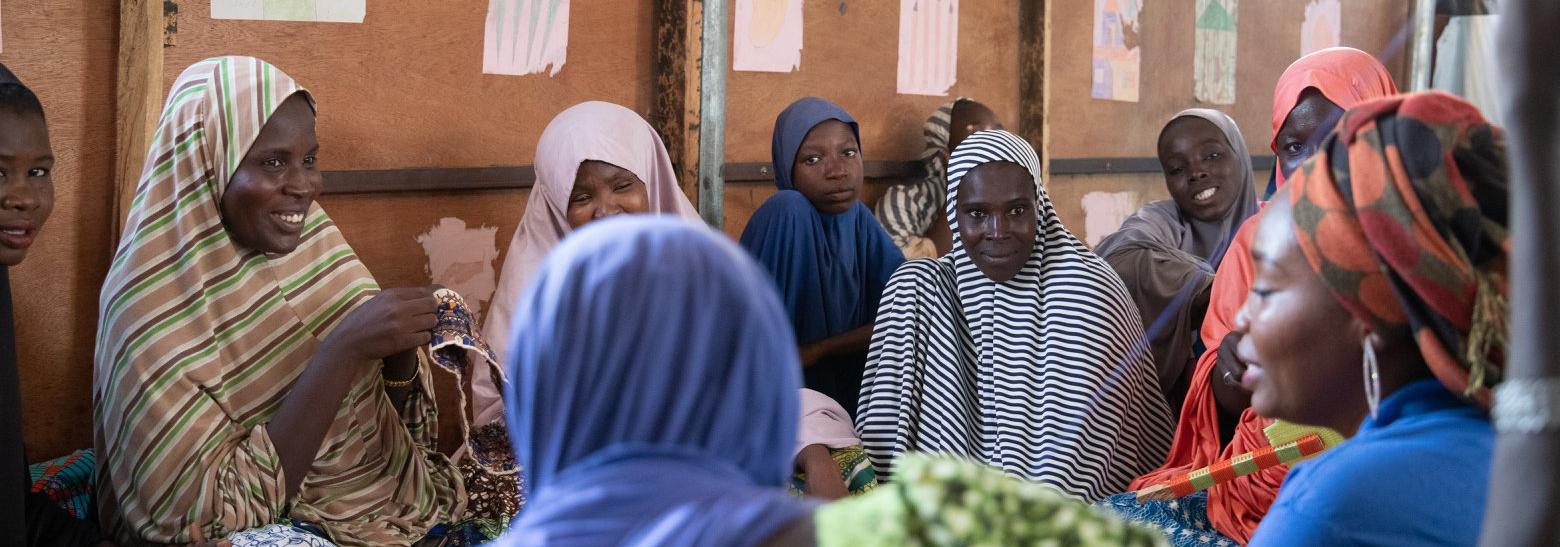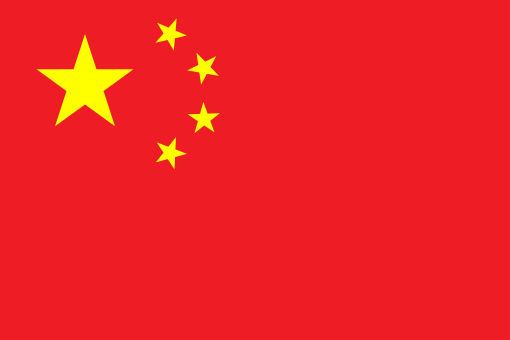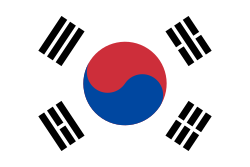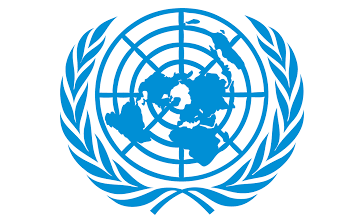IOM Vision
In close collaboration with the Government of Nigeria and partners, IOM seeks to respond to humanitarian protection and assistance needs of those impacted by crisis and support progress towards the achievement of durable solutions.
Objective
Saving lives and protecting people on the move
Beneficiaries include conflict-affected communities, home and host communities as well as internally displaced people in camp and camp-like settings and returnees.
The ongoing and protracted displacement puts additional stress on existing and already limited WASH services and facilities, and with congested populations in displacement sites, waterborne diseases spread rapidly. The main drivers of vulnerabilities related to WASH are closely linked to the conflict, including recurrent, unpredictable and continuous population displacements. Flooding, fierce winds and sandstorms are resulting in repeated substantial damage of WASH infrastructure, including the destruction of latrines, showers, handwashing points and solar panels, affecting access to WASH facilities and services. The use of contaminated drinking water and poor sanitary conditions result in increased vulnerability to water-borne diseases. New arrivals from inaccessible areas, especially women and children, are particularly at risk and need urgent WASH support.
IOM will scale-up its provision of WASH services targeting internally displaced people, returnees and host community in camp and camp-like settings in Borno, Adamawa, and Yobe State, by focusing on the following activities:
- Ensure safe access to water facilities and services through the drilling, upgrading/rehabilitation, care and maintenance of boreholes as well as through groundwater monitoring and water quality monitoring;
- Ensure safe access to sanitation facilities (latrines, showers, handwashing stations) through the construction of gender segregated and people with special need (PSN) friendly sanitation facilities; care and maintenance of existing facilities; improve the quality and accessibility of the sanitation facilities through onsite fecal sludge management;
- Ensure safe use of sanitation facilities through the identification and implementation of measures, in consultation with community members, which ensure privacy and dignity of beneficiaries. These may include the installation of locks, doors, hooks, shelves, provision of string to dry clothes or sanitary items, or support items for persons with disabilities, among others;
- Promote improved water and sanitation outcomes in targeted settings through the systematic promotion of hygiene messages and the support for increased capacity of established community-based committees;
- Ensure safe access and ownership of WASH facilities through community engagement throughout the project implementation within affected communities;
- Ensure environmental sanitation (solid waste management) in operation areas through the establishment of WASH committees including- male and female community members, and the procurement and distribution of tools and equipment;
- Distribute WASH non-food items;
- Conduct capacity building and enhance partnerships with WASH partners and stakeholders.
About 40 per cent of the displaced population across north-east Nigeria reside in the nearly 298 displacement sites, only 122 of which benefit from site management services from national and local authorities and/or camp management agencies. The spontaneous nature of sites coupled with existing gaps in humanitarian assistance make persons living in displacement sites extremely vulnerable to a multitude of risks.
In 2020, IOM will continue to provide site facilitation support and site-level coordination in formal and informal camps in the Borno and Adamawa states.
The continuous deployment of camp management teams is needed to ensure IDPs have access to coordinated basic services at the camp level and have improved living conditions. IOM CCCM operations will be guided by the existing CCCM SOPs and agreed humanitarian standards in north-east Nigeria and will integrate community participation in all levels of camp life. The regular presence of camp management staff will support the continuity of the following activities in camps: Coordination of partners and stakeholders; monitoring of service delivery based on standards; sensitisation and awareness of communities on life-saving interventions; site improvement, care and maintenance; drainage construction and improvement; setting-up and maintenance of community groups, governance structures and site maintenance committees; management and dissemination of site-level multi-sector information; improved two-way communication with affected population to ensure that IDPs have access to critical information regarding displacement trends and available services and they are able to provide complaints and feedback on needs and services; coordination of protection services, coordinated response to identified protection needs and gaps and referrals in collaboration with protection actors. IOM CCCM will continue to manage reception centres for new arrivals and therefore ensuring harmonised reception procedures and guidelines based on standards. IOM CCCM will continue supporting capacity building for CCCM practitioners in north-east Nigeria, IDP communities, national and local authorities, key stakeholders and partners.
In its role as co-lead of the CCCM, Shelter and Non-Food Items (NFI) Sector, IOM will continue to ensure access to multi-sectoral assistance in camps and camp-like settings, advocating and identifying durable solutions for the displaced families and affected communities; and building national capacity through CCCM trainings for national authorities and local partners. IOM will improve support for field sector/operation coordination in Adamawa, Borno and Yobe through coordination of sector partners and continued support to coordination mechanisms set up for deep field locations and hard to reach areas.
Camps and camp-like settings in north-east Nigeria present a variety of shelter conditions, such as emergency shelters (37%) and self-made/makeshift shelters (37%). Other types of shelter are host family houses, government buildings, schools, individual houses and community shelters, which are used as communal shelters or to accommodate individual households. The shelter situation produces a variety of needs of the conflict affected population, including emergency shelter construction for newly-displaced populations, reinforcement and repair of existing emergency shelters, and improved emergency shelters in urban/ peri-urban environments. Non-Food Items (NFI) remain the second most reported need of affected people in north-east Nigeria, both in host communities and in camps or camp-like settings. Blankets/mats remain the most needed items in camps and camp-like settings, as well as host communities (DTM Round 29). According to the figures from the CCCM/SHELTER/NFI sector, a total of 2,603,964 individuals are in need of shelter assistance in the three states in north-east Nigeria, with Borno having the highest caseload of 1,870,249 individuals, followed by 426,815 in Adamawa and 306,899 in Yobe. According to the recent figures from the CCCM/ Shelter/NFI Sector, a total of 2,603,964 individuals are in need of shelter assistance in the three states in north-east Nigeria, with Borno having the highest caseload of 1,870,249 individuals, followed by 426,815 in Adamawa and 306,899 in Yobe. Out of these, a total of 309,887 IDPs are at risk of exposure to harmful elements due to lack of shelter solutions. In addition, 68,090 returnees are living in heavily damaged shelters. An additional 1,156,509 IDPs living in camps and host communities are without adequate shelter and NFI solutions; 277,530 returnees are living in partially destroyed houses.
IOM will scale-up its provision of shelter and NFI assistance targeting internally displaced people, returnees and host communities in Borno, Adamawa and Yobe states. To this end, IOM will: (a) ensure access to different types of emergency shelter solutions for displaced populations through the distribution and prepositioning of emergency shelter kits, construction of emergency shelters, rehabilitation of damaged public buildings, and so on; (b) ensure that displaced populations have access to different transitional shelter solutions; (c) ensure that the care, maintenance and upgrading of existing emergency shelters and transitional shelters are conducted for continued safety and comfort of the affected population; (d) ensure that returnee households have access to materials and labour for repairing their damaged houses; and (e) support local construction market through business grants and training for construction traders, as well as through the use of cash and voucher mechanisms. IOM will also continue and scale-up its NFI support for people in camp and camp-like settings, in host communities, including for new arrivals.
The provision of humanitarian assistance is highly dependent on trends and patterns of human mobility. Humanitarian actors require information on the location and composition of the affected population in order to deliver services and respond to needs in a timely and accountable manner. In Nigeria, the IOM Displacement Tracking Matrix (DTM) remains a key tool in this regard and is endorsed as the key source of data related to the identification and the tracking of trends and patterns of mobility of displaced populations.
DTM provides detailed and up-to-date information on characteristics and needs of crisis-affected populations through assessments of rapid onset displacement, registration and profiling of displaced populations in camps and camp-like settings as well as flow monitoring exercises and reports.
In 2020, IOM DTM will continue to ensure improved information management mechanisms for displaced populations in north-east Nigeria to facilitate planning, gap analysis and rapid response through the following areas of intervention:
- DTM - track and monitor displacement, including gender and age disaggregation, service delivery, and key needs and gaps across communities;
- Biometric registration of IDPs and affected populations in the new humanitarian operational areas through registering of new caseloads as well as update of previously registered caseloads to include births and deaths;
- ETT (Emergency Tracking Tool) - Reinforcement of monitoring and first alert mechanisms for rapid referral in close coordination with sector partners and Government counterparts through rapid paper registrations in order share data within 24 hours of displacement (not including personal data);
- Baseline Assessments - Use IOM distribution application to track assistance provided to beneficiaries over time to prevent duplication of efforts by organisations and better enhance assistance provision;
- Provision of data and sharing with respective local authorities to ensure beneficiaries have access to legal documentation and ensure inclusion in state and local activities.
IOM has been a key partner in providing mental health and psychosocial support (MHPSS) services since the beginning of the ongoing conflict and is working to improve the psychosocial well-being of displaced populations across north-east Nigeria. IOM will continue to offer direct mental health and psychosocial support services and activities to conflict-induced displaced populations and returnees living in camps, informal settlements and host communities in Adamawa, Borno and Yobe States through MHPSS resource centres/safe spaces and the deployment of dedicated MHPSS mobile teams, mental health referral teams, community animators, and psychiatric nurses. IOM-MHPSS mobile teams offer services and activities such as lay counselling, recreational activities, support group sessions, informal education classes, health sensitisation, referral for specialised mental health care services, small-scale conflict mediation/dispute resolution activities, and small-scale livelihood support.
In addition, IOM is co-chairing the inter-agency MHPSS sub-Working Group in north-east Nigeria. IOM, through the MHPSS Sub Working group (SWG) Coordinator, will continue to coordinate the activities of MHPSS response partners by making sure that standards and procedures are followed, responses are coordinated to achieve outcomes and avoid duplication and doing further harm to beneficiaries, and ensuring that common understanding is established among MHPSS response partners, on MHPSS concepts and terms, principles and models of work, community-based approaches and information sharing.
The protracted crisis in north-east Nigeria has led to a meltdown of socioeconomic and development structures, which has contributed to the destruction of health facilities and an incapacitated healthcare sector. For example, 42 per cent of healthcare facilities in the Borno, Adamawa and Yobe (BAY) states are non-functional due to the conflict - a clear indication of the catastrophic impact of the crisis on the health system. Additionally, the quality of care is unclear owing to the unstable security situation and lack of standardised health care packages. An increase in quality service provision, enhanced technical capacity of the healthcare providers and the establishment of a robust monitoring mechanism were thus noted in 2019 as critical issues by the agencies responding to the crisis. Furthermore, gaps in referral services have been strongly flagged by Health Sector partners currently providing primary health care (PHC) services in camps and host communities, as a critical need.
In 2020, IOM will work with the Ministry of Health and health sector partners to provide a more systematic approach to enhancing healthcare provision across BAY states, whilst always ensuring accountability to affected populations. IOM's health teams will work closely alongside MHPSS, Protection, WASH, Shelter, and CCCM partners as well as health sector partners to enhance access to those most in need. IOM will also work health partners in outbreak prevention, preparedness and response efforts, capacity building of health professionals to contribute to health systems strengthening, health information management, and emergency referral and support system. As part of health promotion and prevention activities, IOM will also partner with local NGOs to implement health outreach through community health volunteers, with the above ultimately contributing to improved health outcomes for those most-affected by this protected humanitarian crisis.
Considering that the emergency in Nigeria is primarily a protection crisis, IOM integrates protection mainstreaming principles across its crisis programming. The integration of the protection principles, as well as a survivor-centred approach, provides the framework that is guiding the different activities conducted, creating a supportive environment in which survivor’s rights and wishes are respected, their safety is ensured, and they are treated with dignity and respect.
With regards to specific protection activities, IOM, through the MHPSS mobile teams and safe spaces, will continue to implement protection, GBV prevention and response services in camps and camp-like settings across north-east Nigeria, including sensitisation and awareness-raising campaigns. In addition, IOM will continue to mitigate protection risks, including risks of exposure to GBV, through trainings for various sectors, safety audits, safety assessments, and will work with partners to ensure GBV mainstreaming throughout the humanitarian response.
Furthermore, IOM will strengthen its counter-trafficking activities in Borno and Adamawa states, which include the provision of capacity-building support, support and assistance to victims of trafficking as well as awareness raising. IOM has a leading role in the Anti-Trafficking Task Force (ATTF), working towards enhanced coordination and capacity on anti-trafficking among humanitarian protection partners and key government stakeholders. Technical support activities will be provided to the National Agency for the Prohibition of Trafficking in Persons (NAPTIP), frontline workers, immigration service and police officers, and camp officials. IOM will also continue to work directly and in collaboration with other stakeholders in the identification of victims of trafficking and the provision of protection and assistance to the victims,
IOM will also continue to provide technical support to other units in IOM, UN/NGO partners as well as the Nigerian government including protection, GBV, Counter Trafficking/Trafficking in Persons (CT/TiP) mainstreaming services and activities, making sure that overall protection principles are integrated and consolidated in the humanitarian operations in north-east Nigeria.
IOM has been mandated by the HCT to assume the role of the Humanitarian Hub Management Agency in north-east Nigeria. The Organization is therefore responsible for the construction, management and operation of the hubs on behalf of partners responding to the crisis. The hubs provide secure and safe operating environments for aid workers in deep field locations across the north-east, including accommodation, office space, meeting/training facilities and connectivity services. As enablers of access to field locations, the hubs are considered critical for a sustained and effective humanitarian response in Nigeria. To date, IOM has constructed and operationalised a total of nine humanitarian hubs. The hubs are located in Maiduguri (base camp), Gwoza, Bama, Ngala, Dikwa, Monguno, Banki (2) and Damasak.
In 2020, IOM aims to continue supporting the maintenance and operation of eight humanitarian field hubs and one humanitarian base camp. IOM will also complete the establishment of and operate the humanitarian hub in Rann. The tented structures in the Banki humanitarian hub extension will be replaced with concrete structures. The perimeter walls of all the field hubs will be reinforced with concrete interior walls and the height will be increased by an average of 2 meters using cyclone wire fencing to improve the security of the field hubs
Objective
Driving solutions to displacement
Beneficiaries include internally displaced populations and returnees as well as host communities, communities of origin, and conflict-affected communities.
Although the need for essential life-saving assistance remains widespread, IOM recognizes the urgent need for early recovery and stabilisation interventions, which restore livelihoods and access to essential services, including access to justice, in areas of protracted displacement and in areas of spontaneous return. This is undertaken to strengthen the self-reliance of affected populations, especially girls, youth, women, and the elderly, against future vulnerabilities and shocks.
IOM seeks to contribute to the recovery and resilience-building of conflict affected populations through community stabilisation interventions. To promote positive coping mechanisms, IOM is providing psychosocial support to re-establish family and community support structures disrupted by the conflict. This creates an enabling environment for conflict-affected populations to sustain the emotional well-being of the community when facing obstacles and other challenges in transitioning from humanitarian aid to recovery efforts.
IOM also aims to provide technical and logistical support to community peace committees’ operations, as well as building the capacity of local governance mechanisms to promote local recovery, restore social cohesion, and prevent and respond to acts of gender-based violence (GBV) in compliance with human rights standards and through a survivor-centered approach. In this regard, IOM will also work towards enhanced coordination and complementarity between humanitarian, stabilisation and development partners, through a people-centred approach spanning across the Humanitarian-Development Nexus (HDN).
Early recovery and stabilisation interventions, which restore livelihoods and access to essential services, are crucial elements for creating conditions for durable solutions for IDPs and restoring social cohesion. Without those pre-conditions, a premature return of displaced populations may lead to secondary displacement, deepen IDPs’ vulnerability, and exacerbate tension and social polarisation between IDPs, surrounding communities and returnees. The inadequate capacity in areas experiencing return is considered by IOM to be a direct risk to the overall progressive resolution of displacement situations. As people continue to return to their places of habitual residence, there is urgent and significant need to restore infrastructure, promote early recovery of economic means of livelihood and facilitate a robust resilience building process. IOM`s livelihood interventions will include cash for work (CFW), engaging IDP, returnee and impacted communities. In addition, vocational training and skills enhancement activities for youth will be organized as per labour market assessment to create human capital as necessary for the early recovery phase, with a special focus on youth. CFW and skilled labour schemes will support activities such as comprehensive neighbourhood upgrades and light community infrastructure rehabilitation.
To support the transition of communities out of conflict, IOM works closely with communities across Borno and Adamawa states to establish community dialogue platforms. These platforms consist of traditional leaders as well as other key representatives of the community, including women and youth. Platform members are trained on various skills that enable them to promote peaceful coexistence in their communities. Regular platform meetings are held with community members during which key issues that are affecting them are discussed and addressed. In addition, community impact projects likely to contribute to social cohesion are identified and selected through these dialogues. These projects could, for example, include the organisation of community theatre or rehabilitation of a community centre. To date, nine platforms have been established and supported. In 2020, IOM will aim to establish an additional 15 platforms and support them with the organisation of dialogue and implementation of small-scale community impact projects.
In 2020, one focus of IOM's DTM will be on return assessments, which aim to provide a better understanding of characteristics and numbers of returnees in specific areas to create an internal ward ranking of returns. The ward ranking of returns provides updated information on the number of voluntary returns per ward. This data is then used to conduct "stability" investigations, which use a series of indicators including access to services, security, and social cohesion, to better identify stable and ideal areas for return. IOM DTM is also implementing village assessment surveys (VAS) to support dignified and effective programming in identified returnee areas. VAS provide baseline data on needs and gaps in areas of high return to support area-based programming and enable adapted planning, coordination and targeting of transition and recovery activities.
Furthermore, IOM recently completed the pilot round of a Stability Index, which utilizes a variety of statistical techniques to assess perceptions of community stability in return areas to enable partners to better develop strategies and plan resources and operations in vulnerable areas for coherent interventions that link humanitarian, recovery and stabilization components. Given that the total returnee population represents 41 per cent of the population affected by displacements in the Lake Chad Basin Area, the Stability Index fills a major data and knowledge gap with respect to understanding what drives returnees, and what keeps them from being vulnerable to secondary displacement. The implementation of the stability index sheds more light on what assistance is required to ensure durable returns, who needs it, and where. This tool efficiently allows IOM to identify “pockets of stability” which will enable actors to plan for more adapted and targeted programming.
Additionally, IOM will continue to deploy biometric registration activities to both IDP and return locations to facilitate livelihood partners’ beneficiary targeting activities, linking emergency response to early recovery and ensuring continuous support through cash, voucher and in-kind based interventions in the locations of identified as "pockets of stability". Where possible, emergency support will be synchronized with livelihood support activities. The transition will be gradual to ensure that the immediate and basic needs of the affected population are met and mitigate any possibility of resorting to negative coping strategies. In locations where security, safe access to land and civilians’ freedom of movement allow, increasing agriculture and livelihood activities will complement food and other assistance to support access to productive assets and income generating activities.
Objective
Strengthen preparedness and reduce disaster risk
Information gathered informs and enables decision/makers and responders to provide timely and relevant assistance to internally displaced populations in camp and camp like settings, returnees and impacted home and host communities.
In addition to being systematically deployed in humanitarian response operations, DTM has also proven to be highly effective as a preparedness tool. Clear and timely data - gathered through assessments of rapid onset displacement, registration and profiling of displaced populations in camp and camp-like settings as well as flow monitoring exercises - is essential for disaster preparedness. Through assessments conducted by DTM within hours of an event triggering displacement, reports produced with detailed information will benefit the humanitarian community during the planning and preparedness process.
Based on the trend from DTM data, informing the preparedness and rapid response mechanism, IOM will provide basic background of the demographic info of the assessed locations and provide a platform to support the Operational Humanitarians Country Team (O/HCT) and the Inter Sector Working Group (ISWG) for contingency planning and preparedness for risk reduction. This will include assessments to cover the influx of IDPs due to extended military operations in hard to reach locations as well as rainy season contingency plans.
Nigeria
The map used here is for illustration purposes only. Names and boundaries do not imply official endorsement or acceptance by IOM.
Figures are as of 31 December 2023. For more details of IOM's operational capacity in country, please see the IOM Capacity section.

















